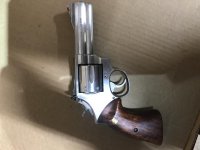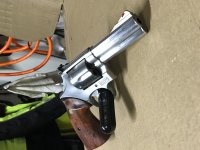Shoebox1.1
Member
- Joined
- Apr 1, 2023
- Messages
- 311
- Reaction score
- 699
So let’s say you get a used smith and Wesson revolver and want to spruce up the finish but don’t want it “polished”. Light flitz work or 0000 steel wool or what can be done shy of a bead blasting? I don’t want the “mirror polish” look ( on this one). I just want to make it as nice as I can doing it at home






